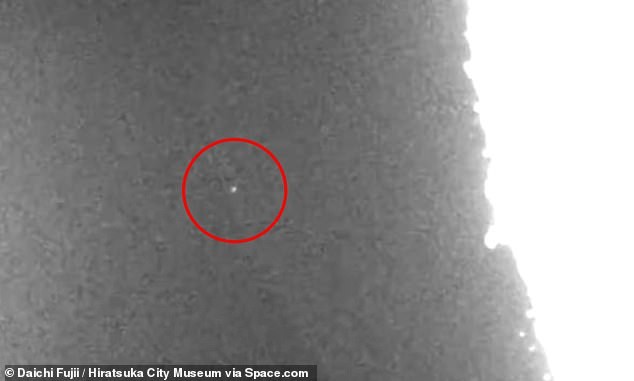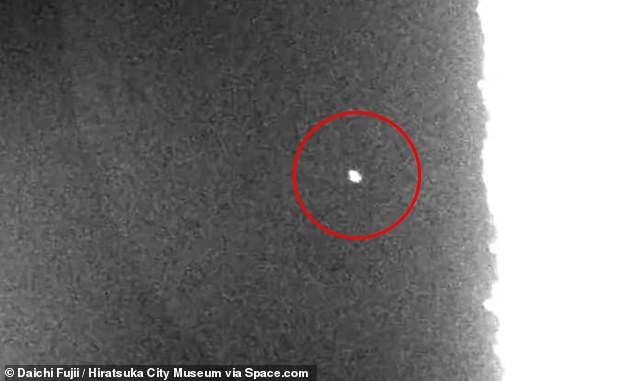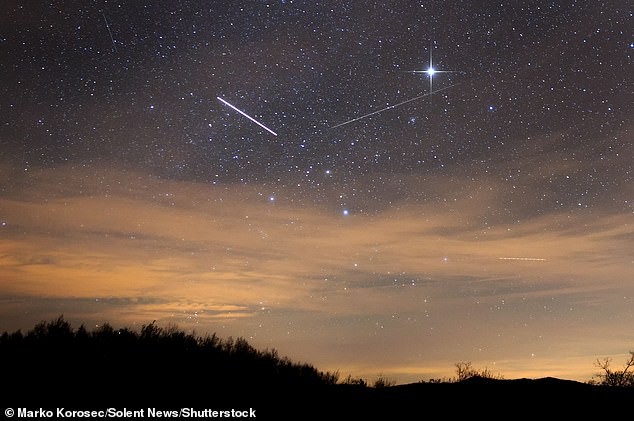Two Mysterious Moon Flashes Ignite Speculation About Alien Visitors
Two mysterious flashes have been spotted on the moon's surface, sparking a debate over what just struck our nearest neighbor in the solar system. Astronomer Daichi Fujii, curator of the Hiratsuka City Museum in Japan, captured the first of these bright flashes on October 30, revealing a large round dot briefly illuminating the moon's surface before disappearing. The second flash was spotted two days later, on November 1, near the moon's horizon from Fujii's perspective here on Earth.

Experts Point to Taurid Meteor Shower as Cause of Moon Flashes
Currently, the prevailing theory is that these flashes were impacts caused by space rocks from the passing Taurid meteor shower. This particular meteor shower can be seen every year around late October and early November. It's caused by Earth traveling through bits of dust and rock left behind by the debris trail of the comet Encke, creating nights full of harmless shooting stars. Fujii noted while revealing the mystery flashes that the moon has no atmosphere, meaning we can't see meteors nearing its surface until they light up at the moment of impact and form a fiery crater. Fujii added in a post on X that the Taurid meteor shower was currently at its peak when he spotted the bright flashes on the moon. Japanese astronomer Daichi Fujii captured the first mysterious flash on the moon on October 30 near the giant Gassendi Crater. Just two days later, Fujii recorded a second flash, with both believed to be high-velocity impacts by space rocks in the Taurid meteor shower. The astronomer had been watching the night sky using several telescopes from two locations in Japan, Fuji and Hiratsuka. Special equipment helped him to instantly detect motion and explosions on the lunar surface. "With my 20cm telescope, I typically detect about one impact flash every few dozen hours of observation," he told Space.com. "Because the thin crescent moon is visible only briefly and often low in the sky where thin clouds are common, I only observe a few dozen flashes per year." That makes back-to-back impacts a space rarity, with the first one on October 30 appearing to land just east of the Gassendi Crater. The crater is a massive impact scar measuring about 68 miles across that sits at the northern edge of the vast, dark plain known as Mare Humorum. The second impact flash likely landed to the west of Oceanus Procellarum, one of the moon's largest seas of ancient lava that covers about 1.5 million square miles. The Taurid meteor shower can be seen from Earth every year in late October and early November as the planet passes through the debris trail of the comet Encke. "I want the public to enjoy science," Fujii told The New York Times. The space rocks, which likely hit the moon, are believed to have been traveling at close to 60,000 mph. With no atmosphere to slow anything down that's on a collision course with the moon, asteroids can sometimes strike the lunar surface at up to 160,000 mph, creating a massive flash and extreme heat at the point of impact. These same meteors, especially from the Taurids, vaporize in Earth's thick atmosphere, which acts like a protective shield against falling debris from space. Smaller meteors burn up as they encounter friction in the atmosphere, creating the streaking effect stargazers see while watching the meteor shower. However, new research has warned that the Taurids could become more of a danger to humans within the next decade. A study in Acta Astronautica has found that the risk will spike around 2032 and 2036 when a swarm of larger, undetected chunks of space rock may get clumped together by Jupiter's gravity. These more dangerous meteor fragments could pass over populated areas, causing hazardous air bursts, where the meteorite pierces the atmosphere and explodes in the air. Larger meteorites could also make it all the way to the ground, potentially landing in crowded cities and causing significant damage.

Taurid Swarm Could Bring Hazardous Air Bursts to Earth Around 2032 and 2036
These two bright flashes on the Moon remind us that our night sky can still surprise us and that the solar system has risks we are only beginning to understand. The Taurid meteor shower, which can be seen from Earth every year in late October and early November as the planet passes through the debris trail of the comet Encke, produced two rapid-fire impacts observed by Fujii. The space rocks, which likely hit the Moon, are believed to have been traveling at close to 60,000 mph, about 96,600 km/h. With no atmosphere to slow anything down that's on a collision course with the Moon, asteroids can sometimes strike the lunar surface at up to 160,000 mph, about 257,000 km/h, creating a massive flash and extreme heat at the point of impact. These same meteors, especially from the Taurids, vaporize in Earth's thick atmosphere, which acts like a protective shield against falling debris from space. Smaller meteors burn up as they encounter friction in the atmosphere, creating the streaking effect stargazers see while watching the meteor shower. However, new research has warned that the Taurids could become more of a danger to humans within the next decade. A study in Acta Astronautica has found that the risk will spike around 2032 and 2036 when a swarm of larger, undetected chunks of space rock may get clumped together by Jupiter's gravity. These more dangerous meteor fragments could pass over populated areas, causing hazardous air bursts, where the meteorite pierces the atmosphere and explodes in the air. Larger meteorites could also make it all the way to the ground, potentially landing in crowded cities and causing significant damage.

